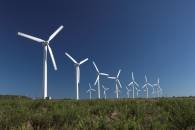Risø DTU (the National Laboratory for Sustainable Energy at the Technical University of Denmark), one of Europe’s leading research laboratories in sustainable energy, has successfully completed testing on a "smart" wind turbine.
Equipped with a laser-based anemometer, the system can predict wind direction, gusts of wind and turbulence.
"We estimate that future wind turbines can increase energy production while reducing extreme loads by using this laser system, which we call wind LIDAR,” says Torben Mikkelsen, Professor at Risø DTU.
The LIDAR system increases blade reliability by making the blades cope better with the fickle nature of wind. The larger blades and consequent increased energy production will help make wind power even more competitive with coal fired power generation.
Using the new technology, wind turbines are able to "see" the wind, before it hits the turbine blades. The wind turbine can then optimise its position and adjust the blades so that the wind is used more efficiently.
It is expected that the technology can increase energy production by up to 5%, due to the ability of being able to use longer blades on LIDAR equipped systems.
For a 4 MW wind turbine, this means a financial gain of AUD $42,000 annually based on current Danish kroner exchange rates and electricity pricing in the nation. The technology could cut CO2 emissions by 25,000 tons by 2025, if even only 10% of wind turbines in the country were equipped with a wind LIDAR.
Since it was established in 1958, Risø has played an active role in discussions about research and energy in Denmark. Nuclear power was the starting point, but the organisation has focused on other areas since a 1985 law passed by the Danish parliament that prohibits the production of nuclear energy in Denmark












































